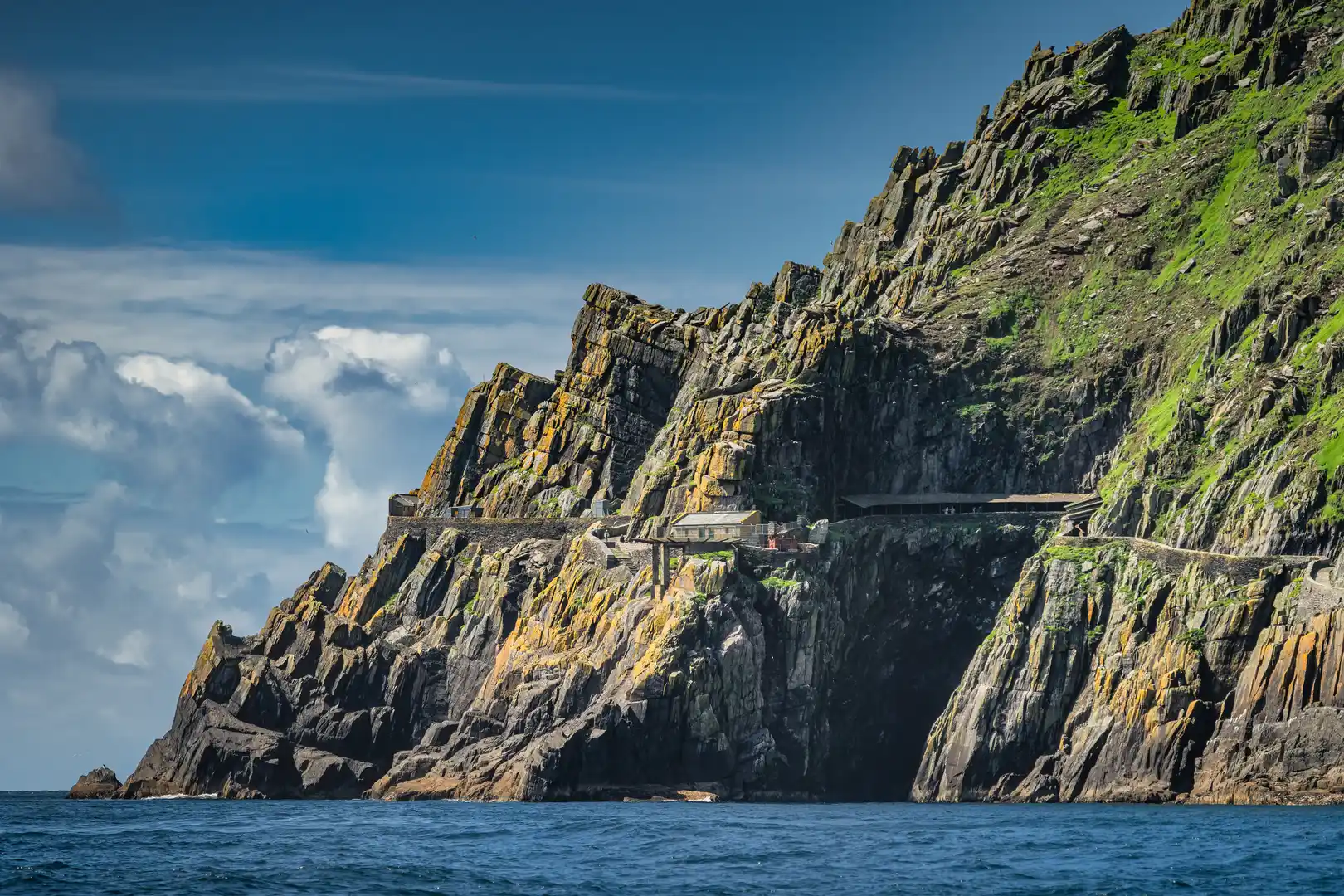Walking Holidays & Outdoor Adventures on Skellig Michael UNESCO World Heritage Site
Sacred Monastic Steps, Atlantic Cliffs, and Ireland’s Wild Edge
A UNESCO World Heritage Site rising from the sea off County Kerry.
Skellig Michael, inscribed as a UNESCO World Heritage Site in 1996, is one of Ireland’s most extraordinary walking destinations. Located 12 km off the Iveragh Peninsula in County Kerry, the island is famed for its 6th-century monastic settlement perched high above the Atlantic. Beehive huts, hand-carved stone steps, and towering cliffs combine in a setting of raw beauty and spiritual isolation.
Visiting Skellig Michael is both a cultural and physical journey. The climb follows over 600 steep steps cut into the rock, leading to the monastic remains at the summit. Along the way, you’ll pass seabird colonies and take in sweeping views across the ocean toward Little Skellig and the Kerry coast.
County: Kerry
Featured Trails
Monastic Stairway Ascent
A demanding climb of more than 600 hand-carved stone steps from the landing point to the monastery, rising 180 m above sea level.
Summit Monastery Walk
A loop among the 6th-century beehive huts, oratories, and terraces with dramatic Atlantic views.
Clifftop Viewing Points
Unfenced outlooks across the island, Little Skellig, and the Iveragh Peninsula.
Adventure Highlights
- Skellig Michael Monastery — a 6th-century hermitage in the sky.
- Over 600 ancient stone steps rising steeply above the Atlantic.
- UNESCO World Heritage Site status for its cultural and natural significance.
- Puffins, gannets, and storm petrels in huge seabird colonies.
- Views of Little Skellig and Kerry’s Iveragh Peninsula.
- Filming location for Star Wars: The Force Awakens and The Last Jedi.
Explore the Area
- Portmagee – the main departure harbour for boat trips to Skellig Michael.
- Valentia Island – heritage trails, lighthouses, and views of the Skelligs.
- Waterville – a coastal town on the Ring of Kerry.
- Cahersiveen – market town with history and access to the Skellig Ring.
- Ballinskelligs – sandy bay and monastic ruins facing the islands.

